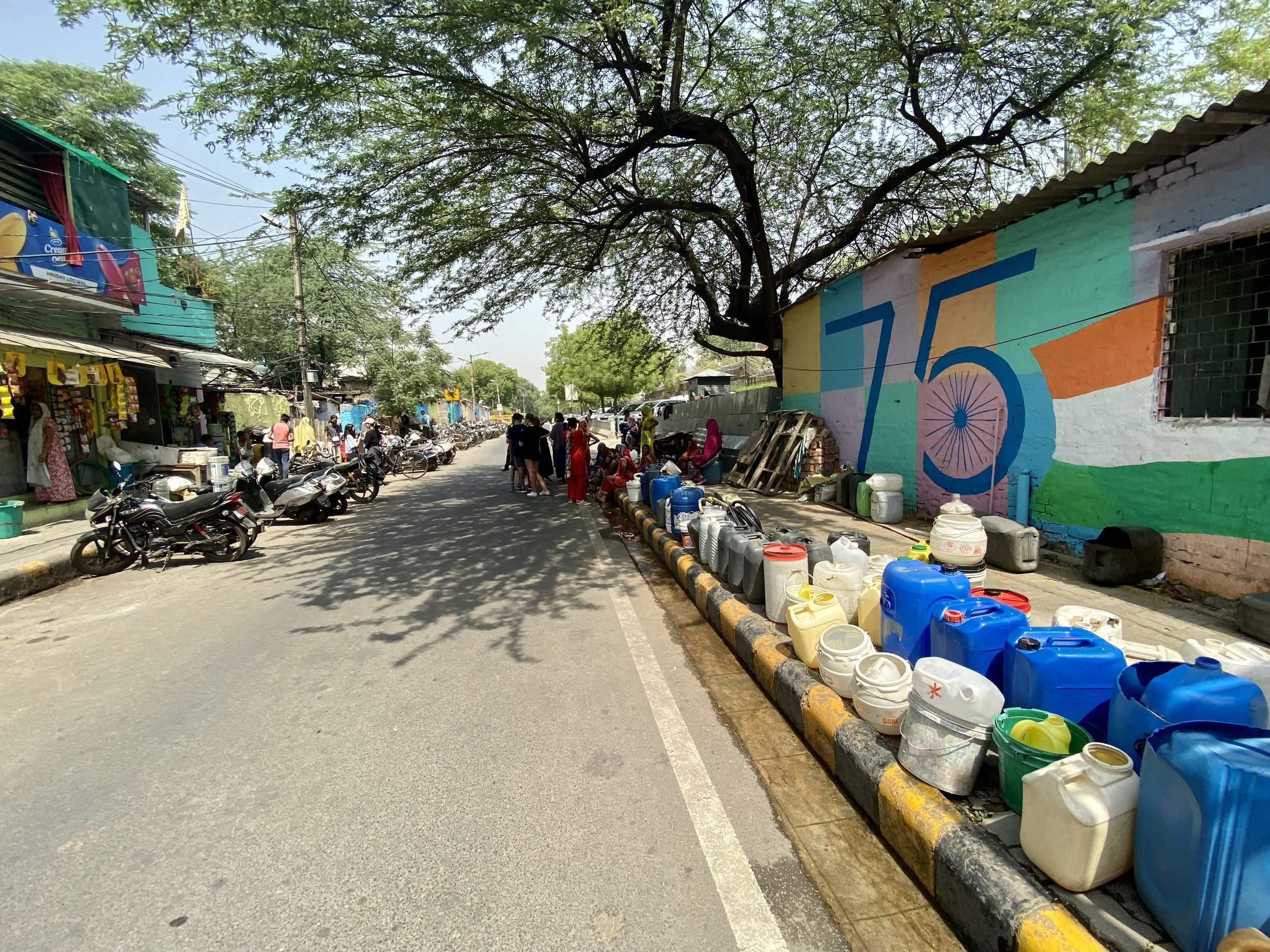The Story Behind the Picture: Community Engagement in Action
Meeting people from the community close to AES in New Delhi, India.
Grade 7 teacher Jenny Hope Lewis loves photography. So when she had a chance to design a unit for her social studies students that would connect them with the local community, she knew that photography could be the perfect lens for an impactful learning experience.
Jenny worked with her grade 7 teaching colleague Megan Kuemmerlin and the two of them created an outline for a brand new unit..
“In our first social studies unit for the year, we focus on understanding ourselves better; the unit is called ‘eyes on self’”, explains Jenny. “In our second unit we turned our ‘eyes to the world’ and spent time learning about the war in the Ukraine. At the end of this unit, with Aaron’s help, we realized we probably knew more about the Ukraine than we did about our own neighbourhood, and this became the focus of our third unit.”
Jenny works at the American Embassy School (AES) in New Delhi, India. The school is located in the embassy neighbourhood so there are a lot of wealthy homes, but there is also a slum community adjacent to the upscale area.
“It’s a stark contrast,” reflects Jenny. “We realized the students had never visited this part of the local area, and we wondered how we might connect. We worked with our local staff and our TAs, and our students got to interview local staff who live in the nearby community. Those staff members also oriented us for community visits and helped us know where to go.”
The students and teachers visited the local community multiple times and got to know the neighbourhood and its residents. They developed questions they wanted to ask local residents and spent time interviewing people and taking photos. From those initial photos, they figured out what they wanted to know more about.
Hence the title of this social studies unit: “The story behind the picture”.
In observing life in the nearby community, the students noticed a lot and developed even more questions.
“One day a water truck arrived to deliver water and the students had so many questions,” remembers Jenny. “They wanted to know why people didn’t have water, and they noticed armed guards near the water trucks and wanted to know why they were there. One student ended up writing to our head of security with questions, and this sparked a conversation with our head of school about what it means to be an inquiry school. She (the head of school) said we need to be open to questions, and we need to change how we do things.”
Part of a book created by one student who took photos and learned about water access in the nearby community.
After visiting the community many times and talking with residents, listening and learning, AES students made e-books to curate their photos and reflect on what they learned. Next year, Jenny plans to add a gallery component to this summative experience, as well.
“Reflecting with Aaron, we were able to connect our unit with high school needs, because high school students are looking for meaningful service opportunities and here we have 70 books about the local neighbourhood,” says Jenny. “The high school students will use our books as primary research and then make their own connections with the local community.”
Jenny says her own experience in the neighbourhood has changed as a result of getting to know people who live there. When she now sees a group of local men who were involved in community interviews, they ask her to play cricket with them. And Jenny’s students are now comfortable in the local community, and curious about learning more stories.
“People’s stories are the heart of this experience,” says Jenny. “I have an ELL student who was reluctant to speak in English but one day we met a local resident named Prince who was dressed in wedding garb and talking about the wedding he had just been to and what it had been like. As he shared his story, the kids really connected with him and my ELL student looks for Prince every time we visit.”
“Another woman wanted to show us her baby,” Jenny adds. “She had come from Kashmir in an arranged marriage and the girls in my class wanted to know about the kohl around her eyes, and the evil eye in the house, and traditions around the baby. The depth of learning was amazing. The students kept asking questions and they wanted to know so much more.”
As the unit came to close, Jenny spent time talking with Aaron, the AES service learning coordinator and another social studies teacher. Ideas for next year’s learning experience have already expanded and the unit has grown again.
“You have to be open to these opportunities, to look for better ideas and to listen,” says Jenny.
A community scene close to AES in New Delhi.



